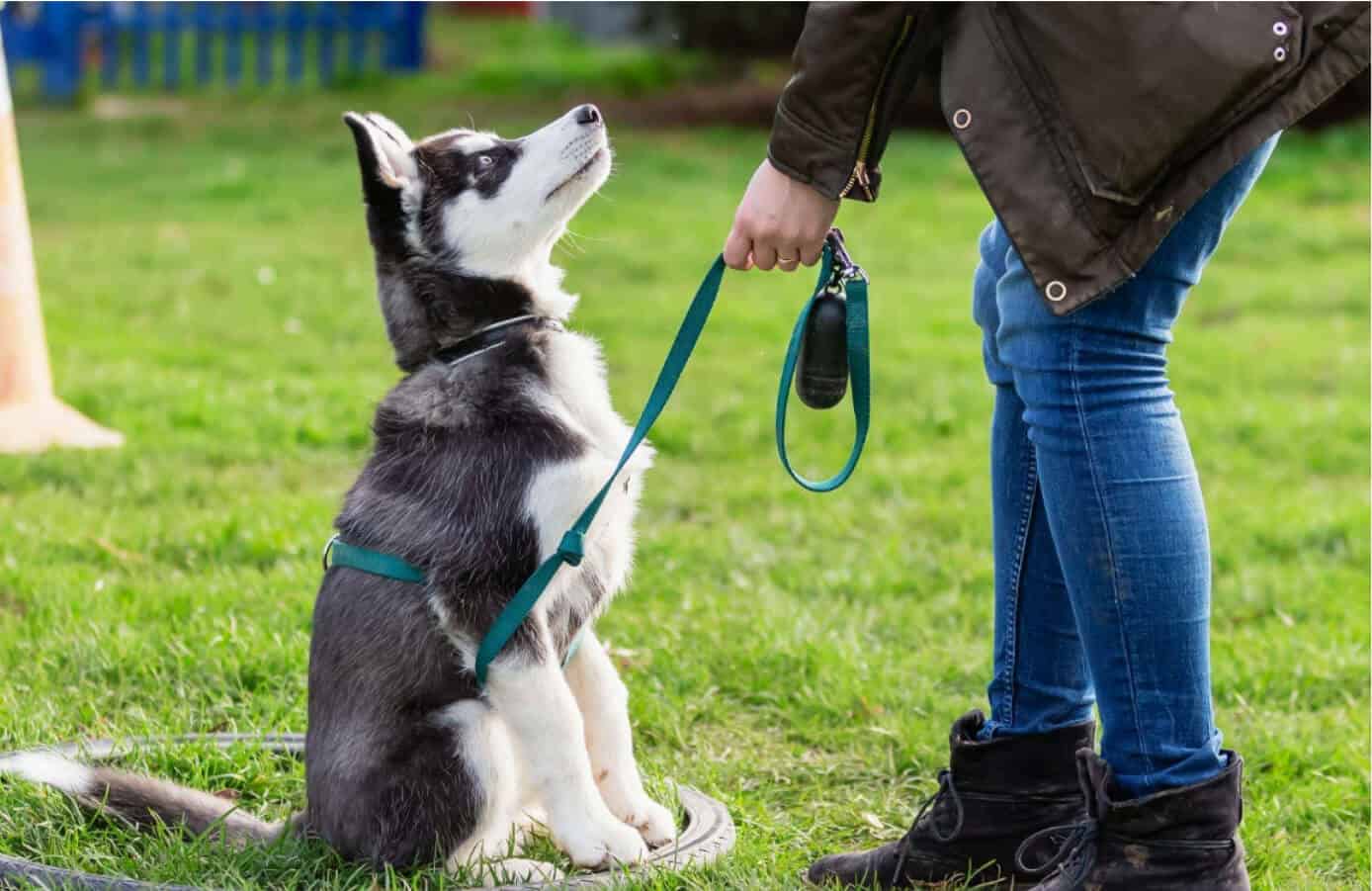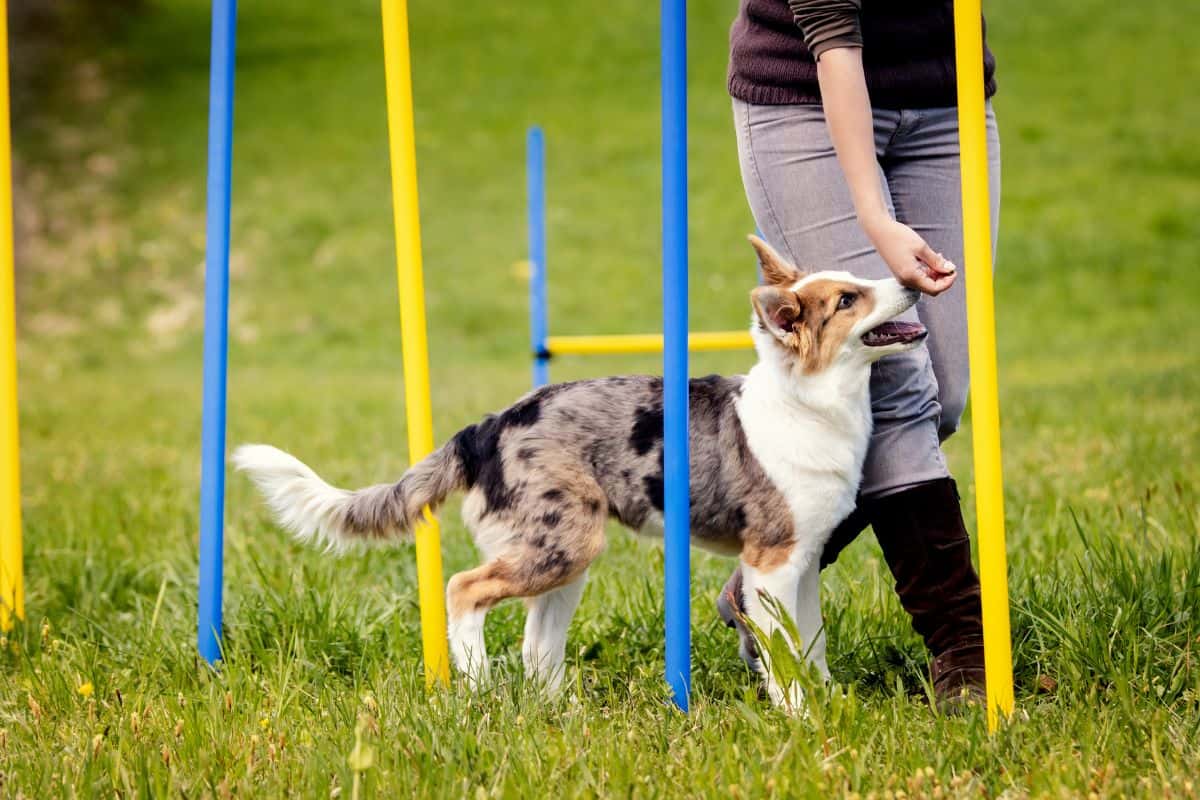Start Your Dog's Journey with Puppy Training That Builds Trust and Respect
Start Your Dog's Journey with Puppy Training That Builds Trust and Respect
Blog Article
Novice's Overview to Successful Pet Dog Training at Home
Efficiently educating a pet at home needs a nuanced understanding of canine behavior and effective communication approaches. Developing clear training goals, using premium benefits, and keeping consistency across family participants are vital elements. Incorporating training right into day-to-day routines can enhance both involvement and retention.
Understanding Pet Habits
Comprehending dog habits is necessary for efficient training and cultivating a harmonious relationship in between people and their canine companions - Puppy Training. Pets communicate primarily via body language, vocalizations, and face expressions, making it important for owners to analyze these signals precisely. Recognizing habits such as tail wagging, growling, or cring can provide understandings into a pet dog's emotional state and intentions
Additionally, comprehending the all-natural impulses of dogs, such as their pack mentality, assists proprietors establish leadership functions within the household. This is crucial for developing a structured setting where dogs really feel protected and are extra receptive to training. Pets are additionally influenced by their socializing experiences; very early exposure to numerous atmospheres, individuals, and other animals can significantly form their behavior later in life.
Typical behavioral concerns, such as aggression, stress and anxiety, or extreme barking, typically stem from misconceptions or unmet needs. Observing and dealing with these problems without delay can avoid escalation and ensure a favorable training experience. By promoting a deep understanding of canine behavior, owners can customize their training techniques to fit their canine buddies, ultimately causing a satisfied and mannerly pet dog.

Necessary Training Tools
A well-equipped training area can considerably enhance the performance of pet training at home. Essential training devices ensure that both the trainer and the pet can participate in effective sessions that promote knowing and bonding.

Spending in a sturdy leash and a comfortable, well-fitting collar or harness is crucial for safety and security and control. These devices aid develop borders and make certain the canine continues to be secure during training. Additionally, a marked training area, without disturbances, help focus for both the canine and the instructor.
Training aids such as training pads, cones, or agility equipment can additionally improve the experience by introducing selection and obstacles. Lastly, having a notebook or digital application for tracking progression can be invaluable, enabling you to keep in mind successes and areas for improvement. Making use of these crucial devices will certainly develop a positive training setting and lay the foundation for effective knowing.
Producing a Training Routine
Establishing company website a regular training routine is important for efficient canine training in the house. A well-structured routine not only aids in strengthening desired actions yet also provides your pet with a complacency and predictability. To produce an effective training routine, start by determining details training goals, such as fundamental commands, leash walking, or housebreaking.
Pick an assigned time each day for training sessions, ideally when your pet is sharp and responsive. Procedure must be short, about 5 to 15 minutes, to preserve emphasis and protect against tiredness. Uniformity in timing and setting will improve your pet's knowing experience.
Include training into everyday tasks to enhance skills. For instance, method commands during walks or mealtime, which incorporates learning right into natural regimens. Additionally, continue to be flexible and readjust the regular as necessary, suiting your pet dog's energy levels and state of mind.
Positive Reinforcement Methods

When applying positive reinforcement, it is essential to select benefits that are motivating for your canine. High-value treats, such as small items of hen or cheese, can be especially effective during training sessions. Additionally, varying the benefits can preserve your dog's rate of interest and interest.
Begin with straightforward commands, like "sit" or "stay," and slowly development to a lot more complicated tasks. Consistency is vital; ensure that all relative use the same commands and reward systems to avoid confusion.
Furthermore, it is important to stay individual and prevent stress. Pet dogs, like humans, find out at their very own speed. By promoting an encouraging training setting with favorable support, you can improve your pet dog's knowing experience while enhancing the bond between you and your hairy friend, laying the foundation for successful training outcomes.
Common Training Difficulties
While training a canine in the house can be a rewarding experience, it typically includes a collection of common obstacles that can check you can find out more both perseverance and consistency. One widespread issue is disturbance. Dogs may become conveniently sidetracked by sounds, activities, and even scents in their environment, making it hard to preserve their focus throughout training sessions.
One more challenge is disparity in commands and support. It can impede and perplex the dog progress if household participants use different signs or incentives. Establishing a unified approach is important for efficient communication.
Furthermore, dogs can experience disappointment or stress and anxiety, especially if they do not understand what is expected of them. This can bring about undesirable habits, such as eating or barking.
Finally, the timing of support is critical. Postponed incentives can decrease the efficiency of positive reinforcement, as dogs might fall short to link the habits with the reward.
Conquering these difficulties calls for dedication, clear interaction, and an organized training strategy - Puppy Training. Recognizing and attending to these common challenges will certainly lead the way for a more effective and delightful training experience in the house
Conclusion
In conclusion, successful pet dog training at home necessitates an extensive understanding of canine actions and efficient interaction approaches. By developing clear training goals and utilizing high-quality treats together with favorable reinforcement, the training process becomes extra gratifying for both the instructor Bonuses and the dog.
Establishing a regular training regimen is crucial for efficient dog training at home.Positive support methods are basic to effective pet dog training, promoting desired actions with benefits rather than penalty. By promoting a supportive training environment via positive support, you can improve your dog's understanding experience while enhancing the bond in between you and your hairy friend, laying the foundation for effective training results.
In final thought, successful dog training at home requires a thorough understanding of canine habits and effective interaction strategies. By developing clear training goals and utilizing high-quality treats alongside positive support, the training process becomes extra rewarding for both the dog and the fitness instructor.
Report this page